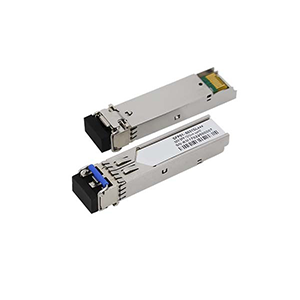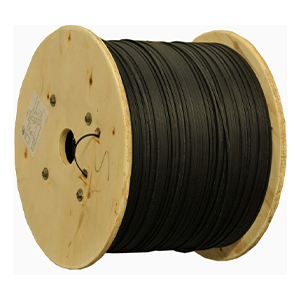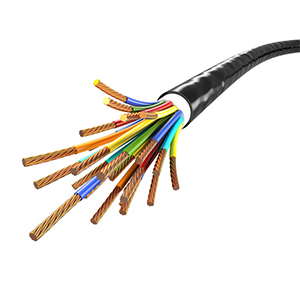Optical fiber transmission undoubtedly plays a vital role in modern communication networks. This article will focus on the working mechanism of fiber optic transceivers. We will first define the basic concepts of fiber optic transceivers and explain its key role in fiber optic communication systems. Next, we will explain in depth the working principle of optical fiber transceivers, including core technologies such as photoelectric conversion and optical signal modulation.
At the same time, we will also introduce the main components of the fiber optic transceiver, such as the optical transmitter and the optical detector, and explain the functions of other important modules. In addition, we will compare the technical differences between single-mode and multi-mode optical fiber transceivers and analyze their characteristics in terms of speed, power consumption, compatibility, etc. Finally, we will introduce the performance test indicators and optimization methods of optical fiber transceivers to help you build an excellent optical fiber communication system.

Basic overview of optical fiber transceivers
Let me introduce you to the basic concepts of fiber optic transceivers:
The composition and functions of optical fiber transceivers:
- Fiber Optic Transceiver is a key component in the optical fiber communication system.
- It consists of an optical transmitter (Optical Transmitter) and an optical receiver (Optical Receiver).
- The optical transmitter is responsible for converting electrical signals into optical signals, and then coupling them into optical fibers for transmission.
- The optical receiver is responsible for receiving the optical signal from the optical fiber and converting it back to an electrical signal for output.
- The optical fiber transceiver also contains related circuits, such as drive amplifiers, automatic power control, etc.
The role of optical fiber transceivers in optical fiber communication systems:
(1) Photoelectric conversion:
- Fiber optic transceivers convert electrical signals into optical signals that can be transmitted in optical fibers, and vice versa.
- This photoelectric conversion is the key technology for realizing optical fiber communication systems.
(2) Signal interface:
- The optical fiber transceiver provides standardized optical fiber interfaces, such as LC/SC/FC, etc., to facilitate access to optical fiber networks.
- Also provides electrical signal interfaces, such as RJ-45, fiber optic SFP/GBIC, etc., to connect to network equipment.
(3) Signal conditioning:
- The optical fiber transceiver contains circuits such as driver amplification and automatic power control, which can adjust the optical signal characteristics.
- Ensure the quality of optical signals and meet various requirements for optical fiber transmission, such as transmission distance, speed, etc.
(4) Electromagnetic compatibility:
- The optical fiber transceiver uses optical signal transmission, which is free from electromagnetic interference and has higher reliability.
- At the same time, optical fibers cannot leak electromagnetic signals to the outside, avoiding electromagnetic compatibility problems.
In short, the optical fiber transceiver is an indispensable key component of the optical fiber communication system. It realizes the conversion of electrical signals and optical signals, and provides a standardized optical and electrical interface, which is the basis for building a high-speed and stable optical fiber network.
How fiber optic transceivers work
Let me introduce you to the working principle of fiber optic transceiver in detail:
Sending principle of optical fiber transceiver:
- The sending end receives electrical signal input from the network device.
- The electrical signal drives the light source at the sending end, usually a laser diode (LD) or a light-emitting diode (LED).
- The light source will convert the electrical signal into the corresponding optical signal and couple it into the optical fiber for transmission.
- The transmitting end also includes a drive amplifier circuit, which is used to adjust the emission power and drive current of the light source.
- Sometimes an automatic power control (APC) circuit is added to keep the optical power constant.
Receiving principle of optical fiber transceiver:
- The receiving end will couple the optical signal received from the optical fiber to the photodetector.
- Photodetectors usually use PIN diodes or avalanche photodiodes (APD).
- The light detector will convert the received optical signal into a corresponding electrical signal output.
- The receiving end also includes an amplifier circuit to amplify the weak light detector output.
- Sometimes an automatic gain control (AGC) circuit is added to keep the output level constant.
Core technology analysis:
(1) Photoelectric conversion:
- The light source (LD/LED) converts the electrical signal into an optical signal, and the light detector in turn converts the optical signal into an electrical signal.
- This photoelectric conversion is the basis of optical fiber communication and requires efficient and linear conversion characteristics.
(2) Optical signal modulation:
- The output power of the light source will change according to the input electrical signal to achieve light intensity modulation.
- Other modulation methods such as phase modulation or frequency modulation are sometimes used.
- The choice of modulation method requires a balance between transmission performance, cost and complexity.
(3) Photoelectric coupling:
- The optical signal output by the light source must be efficiently coupled into the optical fiber for transmission to reduce optical loss.
- Photodetectors also need to be able to efficiently capture light signals from optical fibers.
- This requires precision design of the optical system and high-precision fiber optic connections.
In short, fiber optic transceivers achieve efficient interchange between electrical signals and optical signals through core technologies such as photoelectric conversion, optical signal modulation and photoelectric coupling, which is the key to the operation of fiber optic communication systems.
Main components of optical fiber transceiver
Let me introduce you to the main components of the fiber optic transceiver in detail:
Optical Transmitter:
- Light source: Laser diode (LD) or light-emitting diode (LED) is usually used as the light source.
- LD has higher optical output power and beam focusing performance.
- LED costs are lower and suitable for short-distance, low-speed applications.
- Drive circuit: used to provide appropriate current to drive the light source to emit light signals.
- Power and waveform modulation need to be implemented to meet optical signal transmission requirements.
- Sometimes an automatic power control (APC) circuit is added to keep the optical power constant.
Optical Receiver:
- Photodetector: Usually PIN diode or avalanche photodiode (APD) is used.
- PIN diodes have low cost, low sensitivity, and are suitable for short distances.
- APD has high sensitivity, but requires high voltage bias and is suitable for long distances.
- Amplification circuit: Amplifies the weak light detector output signal.
- The gain, bandwidth and noise characteristics of the amplifier circuit need to be considered.
- Sometimes an automatic gain control (AGC) circuit is added to keep the output level constant.
Other components of fiber optic transceiver:
- Optical coupling device: used to efficiently couple the light source output into the optical fiber to reduce optical loss.
- Optical components such as collimating lenses and fiber optic collimators are usually used.
- Optical fiber interface: Provides standardized optical fiber connection interfaces, such as LC, SC, FC, etc.
- Packaging/heat dissipation: Use metal or plastic packaging and equipped with heat dissipation device.
- Power circuit: Provides the required power voltage and current for each module.
In short, an optical fiber transceiver is composed of multiple core components such as an optical transmitter, an optical detector, an optical coupling, and a drive circuit. Through their collaborative work, efficient conversion between electrical signals and optical signals is achieved, which is an important part of optical fiber communication. key components of the system.
Characteristics of different types of optical fiber transceivers
Let me compare the characteristics of different types of fiber optic transceivers in detail:
Technical differences between single-mode and multi-mode fiber optic transceivers:
(1) Light source:
- Single-mode transceivers use single-mode laser diodes (LDs) as the light source.
- Multimode transceivers use multimode LEDs or multimode LDs as light sources.
(2) Optical fiber interface:
- Single-mode transceivers use smaller diameter (9/125μm) single-mode fiber.
- Multimode transceivers use multimode optical fibers with larger diameters (50/62.5/100/125μm).
(3) Optical coupling:
- Single-mode transceivers require precise optical coupling to ensure the collimation of the light source and optical fiber.
- The optical coupling of multimode transceivers is relatively loose, and the alignment of the light source and the optical fiber is not so strict.
(4) Transmission performance:
- Single-mode transceivers enable longer transmission distances and higher bandwidths.
- Multimode transceivers have shorter transmission distances and are suitable for medium and short distance applications.
Comparison of other performance parameters of optical fiber transceivers:
(1) Transmission rate:
- Single-mode transceivers can support higher transmission rates, such as 10/40/100Gbps.
- Multimode transceivers generally support transmission rates of 1/10/40Gbps.
(2) Power consumption:
- Single-mode transceivers consume higher power and require more complex driver circuits.
- Multi-mode transceivers have low power consumption and relatively simple structures and circuits.
(3) Compatibility:
- Single-mode transceivers generally follow stricter standards and have better compatibility.
- The standards for multimode transceivers are relatively loose and have poor compatibility.
(4) Cost:
- Single-mode transceivers are more expensive and limited by precision optical components.
- Multi-mode transceivers are relatively low-cost and widely used.
In short, there are differences in key technologies such as light sources, optical fibers, and optical coupling between single-mode and multi-mode optical fiber transceivers, resulting in different characteristics in terms of transmission performance, speed, power consumption, compatibility, and cost. , need to be selected according to specific application scenarios.
Performance testing and optimization of optical fiber transceivers
Let me introduce to you the performance testing and optimization methods of optical fiber transceivers:
How to test the main indicators of optical fiber transceivers:
(1) Sender test:
- Optical power: Measure the optical output power of the light source to ensure compliance with standard requirements.
- Modulation characteristics: Measure the modulation response characteristics of the light source to electrical signals.
- Light emission spectrum: Measure the spectral width and central wavelength of the light source.
(2) Receiver test:
- Sensitivity: Measures the sensitivity of the receiver to the minimum detectable optical power.
- Gamma factor: Measures the relationship between the signal-to-noise ratio of the receiver and the input optical power.
- Jitter characteristics: Measure the receiver’s tolerance to time jitter and amplitude jitter.
(3) System-level testing:
- Link attenuation: Measure the total transmission loss of the entire fiber optic link.
- Eye diagram characteristics: Measure the opening degree and jitter of the eye diagram at the receiving end.
- Bit error rate: Measures the bit error rate (BER) performance of the entire system.
How to improve fiber optic transceiver performance:
(1) Light source optimization:
- Choose LD or LED with better light output power and emission spectrum.
- Improve the modulation characteristics of the light source and increase the modulation bandwidth and linearity.
- Optimize the coupling optical path of the light source and improve the coupling efficiency with the optical fiber.
(2) Photoelectric detection optimization:
- Choose photodetection devices with higher sensitivity and low noise, such as APD.
- Optimize the bias voltage and amplification circuit parameters of the photodetector.
- Improve the coupling efficiency between the photodetector and the optical fiber and reduce the optical power loss.
(3) Circuit optimization:
- Optimize the power, bandwidth and noise characteristics of the drive circuit.
- Adopt high-performance analog front-end amplification and signal processing circuits.
- Optimize power filtering and isolation to reduce electromagnetic interference.
(4) System optimization:
- SelectUse the appropriate fiber type to optimize fiber transmission characteristics.
- Using advanced modulation and coding techniques such as forward error correction.
- Optimize system-level parameters such as power budget, dispersion compensation, etc.
To sum up, the performance testing and optimization of optical fiber transceivers is an all-round and systematic work, which requires comprehensive consideration and optimization at all levels from light source, photoelectric detection, circuit design to system integration, etc., in order to maximize the Improve the overall performance of optical fiber communication systems.
Summary
As a key component of the optical fiber communication system, the performance of the optical fiber transceiver directly affects the transmission quality of the entire network. Our company has long been focused on the R&D and manufacturing of optical fiber transceivers and related products, and has rich industry experience. Our optical fiber transceivers not only reach industry-leading levels in terms of photoelectric conversion efficiency and optical signal modulation, but also meet your demanding needs in terms of key parameters such as speed, power consumption, and compatibility.
Whether you need single-mode or multi-mode fiber optic transceivers, we can provide you with customized solutions. At the same time, our professional team will provide you with a full range of technical support and performance testing services to help you optimize the performance of optical fiber transceivers and build an excellent optical fiber communication network. Contact us now to learn more about our company’s fiber optic transceiver product line and related services.
Fiber Optic Transceivers FAQ
A fiber optic transceiver is a device that combines both a transmitter and a receiver to enable bidirectional communication over a fiber optic cable.
The transmitter typically uses a laser diode or LED to convert electrical signals into optical signals that can be transmitted through the fiber optic cable.
The receiver uses a photodetector, such as a photodiode, to convert the incoming optical signals back into electrical signals that can be processed by the connected equipment.
In addition to the transmitter and receiver, a fiber optic transceiver may also include components like driver circuits, control electronics, and optical coupling interfaces.
Common types include SFP (Small Form-Factor Pluggable), SFP+, QSFP (Quad Small Form-Factor Pluggable), and XFP (10 Gigabit Small Form Factor Pluggable) transceivers, which differ in their physical size, speed, and supported fiber types.
Fiber optic transceivers use separate transmit and receive fibers, or a single fiber with different wavelengths for transmit and receive, to enable full-duplex communication.
Common wavelengths include 850 nm, 1310 nm, and 1550 nm, which are chosen based on factors like fiber type, transmission distance, and system requirements.
Transceivers may incorporate features like dispersion compensation, automatic power control, and error correction to maintain signal integrity over the fiber optic link.
Key factors include the fiber type, cable length, optical power budget, and compliance with industry standards like IEEE, SFF, and MSA.
Transceivers are often designed as modular, hot-swappable components that can be easily installed and replaced in network switches, routers, and other equipment.
Fiber Optic Transceivers Related Product
-
25G SFP28 BIDI 1270nm 10km Transceiver
-
25G SFP28 BIDI 1270nm 300m Industrial Module
-
25G SFP28 BIDI 1270nm 300m Transceiver
-
25G SFP28 BIDI 1270nm 40km Optical Transceiver
-
25G SFP28 BIDI 1270nm Industrial Transceiver
-
25G SFP28 BIDI 1310nm Industrial Transceiver
-
25G SFP28 BIDI 1330nm 10km Transceiver Module
-
25G SFP28 BIDI 1330nm 300m Industrial Module
-
25G SFP28 BIDI 1330nm 300m Transceiver Module




